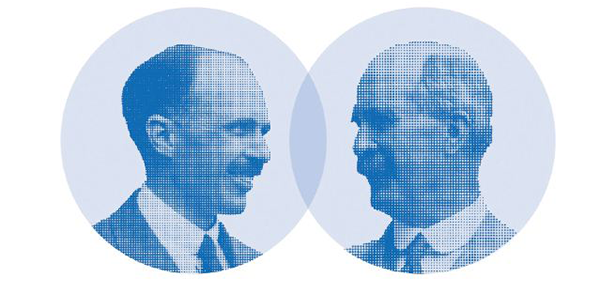Two Braggs Crystallography Quiz
Stephen Soanes, Support Officer at the Wolfson Research Exchange and PG Hub
Published August 2013
A fun quiz to test your knowledge on William Lawrence Bragg and Sir William Henry Bragg, the father and son team who were awarded the Nobel Prize in 1915.

How much do you know about the two Braggs? – The father and son team who were awarded the Nobel Prize in 1915 "for their services in the analysis of crystal structure by means of X-rays". You don’t need to be a Nobel Laureate to take part; Stephen Soanes has kindly put together a quiz that's just for fun and where you will hopefully learn something new about these two scientists.
 Stephen Soanes is Support Officer at the Wolfson Research Exchange and PG Hub. His doctoral research explored the changing place of convalescence in the public mental hospital system and wider community. He was previously the Research Assistant on the Early Women Biochemists Project (History and Life Sciences).
Stephen Soanes is Support Officer at the Wolfson Research Exchange and PG Hub. His doctoral research explored the changing place of convalescence in the public mental hospital system and wider community. He was previously the Research Assistant on the Early Women Biochemists Project (History and Life Sciences).
Images: Copyright of the Royal Institution.
/body>
